This is part 2 of a 3-part series teaching everything you need to know about the ketogenic diet.
Table of Contents
How Reducing Carb Intake Affects Appetite
One of the most amazing effects of the Keto diet or any significant reduction of carb intake is how it significantly changes the appetite.
- Hunger is reduced.
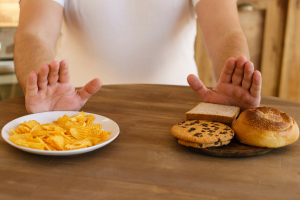
- Out of control cravings for sugar, sweets and other carbs are gone.
- Many report they no longer wake up in the middle of the night to sleep eat, a common occurrence among those whose appetite is wrecked by carbs.
- Calorie counting becomes obsolete as the appetite is reduced naturally and low carb eaters simply want and need less food, without starvation or will power. This is the reason why Keto does not include calorie counting but instead advises people to eat to satisfaction, which amazingly comes from much less food than when carb intake is substantial.
Why is this so? There are two main reasons.
The Leptin Equation
The hunger-regulating hormone leptin works in the brain to send signals to the body that you are full, so it registers the need to decrease food consumption, increase metabolic rate and shut off the hunger response. This is a complicated process and an ongoing cycle that repeats itself, as you get hungry again and again throughout the day.
Therefore, as the levels of leptin rise and wane, so does the sense of hunger (up or down) and to some extent your metabolic rate.
Between meals, your fat mass decreases in size as it is being used for energy, and so does the level of leptin. Less leptin crosses the blood-brain barrier, less binds to its receptors and the brain sends the signal to let you know it’s time to eat again.
The critical point is when leptin crosses the BBB because if it cannot make it across, the hunger response is never shut off, no matter how much leptin there maybe in the blood stream.
This problem and the often the plight of the obese is when leptin never reaches their brain to shut-off the hunger response, and hunger results in eating, which makes more fat stores, which makes more leptin, which cannot shut off the hunger response because it cannot get to the brain, in a never-ending cycle.
Why does this happen?
Researches from St. Louis and Japan (Banks A, Coon AB, Robinson SM, Moinuddin A, Shultz JM, Nakaoke R, Morley JE, et all, Triglycerides induce leptin resistance at the blood-brain barrier) figured out that triglycerides, which are fats found in the blood stream interrupt the passage of leptin across the blood-brain barrier.
When triglyceride levels are high, as they are in most overweight and obese people, they block this passage of leptin where it can signal that the body has had enough food and is satisfied.
What does this have to do with a low carb diet?
 It is a well-known fact that a low-carb diet results in a dramatic reduction in triglyceride levels. This reduction ensures that leptin can get to the brain to successfully reduce hunger.
It is a well-known fact that a low-carb diet results in a dramatic reduction in triglyceride levels. This reduction ensures that leptin can get to the brain to successfully reduce hunger.
The reduction in triglycerides happens pretty fast once carb intake is reduced, and is one of the main reasons that low carb eaters have a substantial reduction in hunger. As an added benefit, once leptin gets to the brain it boosts thermogenesis (fat burning) and so the metabolic rate increases.
This is also one of the main reasons that low-carb wins the battle over low-fat diet plans. A low carb diet can result in a naturally lower caloric intake as people are simply not as hungry as they are when eating many carbs.
They are not white knuckling it through caloric restrictions as they do on the many high carb/low-fat plans where people need much more support to get through the dietary day.
Conversely, low-fat diets raise triglycerides levels and eventually, most who follow these types of plans will give into that hunger.
TAKEAWAY
Low carb diets reduce triglyceride levels in the body, allowing the hunger hormone leptin to reach the brain and register satiety, greatly alleviating hunger, and allowing for a natural reduction in caloric intake through simple satisfaction and a better-regulated appetite.
Blood Insulin Levels
Another way that limiting carbs regulates appetite is by regulating insulin. Researchers at Temple University School 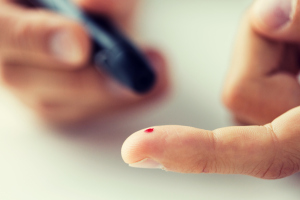 of Medicine found that lowering carb intake alters blood insulin levels in ways to promote appetite suppression and satiety.
of Medicine found that lowering carb intake alters blood insulin levels in ways to promote appetite suppression and satiety.
10 obese people with type 2 diabetes were placed in the hospital 14 days, and each bite of food they took was analyzed and daily blood samples were taken. For 7 days they ate a normal diet, then for 14 days, their carb intake was limited to 21 grams per day, and they were allowed to eat as much protein and fat as they wanted.
- In the end, the analysis showed they ate 1/3 fewer calories on the low carb days than they ate on the 14 days of a regular diet that included carbs.
- They lost an average of 3.5 pounds during the low carb days.
- Their blood insulin levels dropped by 23%, which resulted in the suppression of appetite.
Carbohydrates stimulate the appetite and also cause out of control cravings, in part due to the erratic blood sugar swings and insulin hikes they cause, but a low carb diet actually works as a natural appetite suppressant.
This is one of the main reasons that keto and other low carb plans work very well for those who have struggled all their lives white knuckling it through the various low calorie and low-fat diets they have endured.
In many cases, there is no willpower, hunger is not an issue, and a new lifestyle takes over naturally.
TAKEAWAY
Reducing carb intake regulates blood sugars resulting in natural appetite suppression and a natural satisfaction without out of control cravings.
A Closer Look At Carbohydrates
Carbohydrates are one of the three main macronutrients; the others are protein and fat.
Carbohydrates are biomolecules or saccharides, in simple terms, carbohydrates are sugars. In order to understand how the Ketogenic diet works, it is important to understand carbohydrates and what they do inside the body.
Types Of Carbohydrates
There are two types of carbs, traditionally classified as simple and complex.
Simple Carbohydrates
Simple carbs are those made from only one or two sugar (saccharide) chains. All simple sugars and starches are converted to glucose in the body, except sugar alcohols and insoluble fiber.
Types Of Simple Sugars
- Sucrose is table sugar or cane sugar and all items made with it
- Glucose is found in some fruits and starchy vegetables
- Fructose is the sugar in all fruits and honey and is also used to make many processed food products because of its high level of sweetness
- Galactose is the sugar that occurs naturally in dairy, like milk and yogurt
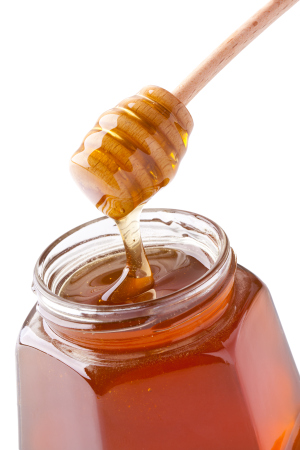 Naturally occurring sugars are those found naturally in a food or in the ingredients used to make a food, for example, fruit, milk, and vegetables.
Naturally occurring sugars are those found naturally in a food or in the ingredients used to make a food, for example, fruit, milk, and vegetables.
Added sugars refer to those added during cooking or manufacturing, and include, corn syrup, honey, or table sugar. Table sugar and many things made with it are considered to be an empty calorie food that serves absolutely no nutritional benefits in the body.
Simple Carbohydrates Include: non-starchy vegetables, candy, table sugar and anything made from it, soda, white flour, juices, fruit, milk, honey, and syrup just to name a few.
With the exception of non-starchy vegetable, simple carbs require no break down as they enter the body to be absorbed so they digest quickly to flood the bloodstream with glucose, causing insulin spikes to occur.
This process triggers the release of insulin from the pancreas, which sends food to cells, and any leftover sugar is stored as fat, which contributes to weight gain and obesity.
The constant stimulation of the production of insulin may and does at epidemic levels in the United States, eventually lead to insulin resistance, a condition known as type 2 diabetes.
TAKEAWAY
Simple sugars are insulin triggers that can promote weight gain and increase risk factors for type 2 diabetes.
Complex Carbohydrates
Complex carbs are made up of thousands of sugar chains hence the name complex.
Complex Carbohydrates: any starch including but not limited to corn, potatoes, beans, rice, grains, cereals, and bread.
While some may argue that complex carbs are “better” than simple carbs, low carb diets, like the Ketogenic take a different viewpoint, which is that both simple and complex carbs are insulin triggers that provide the body with a fuel source that can turn to stored fat (glucose).
TAKEAWAY
Ketogenic diet principles propose that complex carbs are insulin triggers that provide the body with a fuel source that can and does turn to stored fat (glucose).
Glycemic Load
Doctors and other researchers in the Harvard Nurses Health Study found that baked potatoes and cold cereal were foods that contributed most to increasing blood sugar levels to an unacceptable level, known as “glycemic load.”
The Nurses’ Health Study both part 1 and part 2 is the largest epidemiological study conducted in the US into the risk factors for major chronic diseases in women and has been going strong since 1976.
75,521 women aged 38 to 63 who had no previous diagnosis of diabetes, angina, myocardial infarction, stroke, or any other cardiovascular conditions were followed for ten years (Liu, S., Willett, W.C., Stampfer, M.J., et al).
During the 10 year follow up, the study documented 761 cases of coronary heart disease, 208 of which were fatal and 553 nonfatal, and dietary glycemic load was directly associated with risk of cardiovascular heart disease even when adjustments for smoking status, age, and total caloric intake and other risk factors for heart disease were accounted for.
TAKEAWAY
Researchers found that those carbs classified as high by the glycemic index, instead of the traditional classification of either “simple” or “complex” were better predictors of cardiovascular disease risks.
The Glycemic Index
The Glycemic Index (GI) is a scale of 1 to 100 that measures a food’s impact on raising blood sugars or its glycemic load. The higher the score a food has the higher the glycemic load.

Simple Versus Complex Carb on the GI Scale
- A white potato without skin has a GI of 98, while one raw apple has a 34 GI
- The potato is considered a complex carb, while the apple is considered to be a simple carb.
- Any foods that are considered to cause significant insulin release will typically be high on the GI scale.
Carbs And Ketosis
All carbs, both simple and complex convert to glucose in the body, which is then used as fuel and energy for cells and other organs inside the body.
TAKEAWAY
Any glucose not used for energy will be stored by the body as fat. Conversely, once those sources of glucose are eliminated, namely carbs, the body can turn to fat stores for energy and enter ketosis, which burns fat for energy instead.
Sugar Alcohols
In general, sugar alcohols are not insulin triggers and they do not count as impact carbs, but some do have a higher GI than others and should be considered carefully and monitored for their effect on your individual results.
Individual results can vary as to the digestion of sugar alcohols depending upon an individual’s gut enzymes and how the sweeteners are consumed.
Glycemic Index Of Sugar Alcohols
Maltitol 36
Xylitol 13
Sorbitol 9
Glycerol 3
Isomalt 2
Mannitol 0
Erythritol 0
Reducing Carbs To Induce Ketosis
The use of carbs for fuel is exactly what the ketogenic diet aims to avoid by greatly limiting carbs and their sources in order to give the body its alternative energy source, which is fat.
The main source of carbohydrates in the Ketogenic diet is non-starchy vegetables.
This is especially strict in the beginning weeks in order to trigger ketosis.
But wait, aren’t vegetables simple carbs? Yes, they are but…
- Non-starchy vegetables are not insulin triggers.
- Non-starchy vegetables are very low in carbs, making them a nutrient dense food with a very low glycemic load that supports ketosis.
The following carbs are not allowed…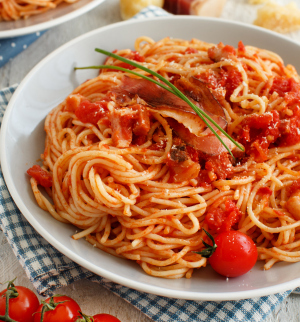
- Sugar or foods made with it
- Fruit
- Rice
- Pasta
- Bread
- Milk
- Starchy vegetables
- Any other starches
The Ketogenic diet advises less than 20 grams of net carbs per day, most of which should come from non-starchy vegetables.
How To Calculate Impact Carbs
The Role Of Fiber
Fiber is naturally found in many carbohydrates, and remember fiber does not turn into glucose in the body as other sugar carbs do, and so that fiber helps to lower the glycemic load of carb-rich foods.
Net Carb Formula
The Ketogenic diet only counts what are known as Net Carbs and the formula to figure out the net carbs of any food is simple.
THE NET CARB FORMULA
Total Carbohydrate Count – Fiber Count = Net Carbs
The more fiber a food has, the less impact its carbohydrates will have on blood sugars.
This formula makes it easy to determine the actual impact carbs of any food by simply reading the food labels or looking at its nutritional value.

Key Considerations For Fiber And Carbs
- Fiber does not negate carbs, it just lowers the impact of carbs that naturally occur within that For example, an avocado has 17 grams of carbs, and 13 grams of fiber, yielding 4 grams of net carbs. 1 cup of ice cream has 32 grams of carbs, but mashing in an avocado to that ice cream will not reduce it by the 13 grams of fiber in the avocado.
- Sugar count listed in the carbohydrates section of a food label is exactly that, sugar. Typically this means the label has separated sugar and fiber in the total carb count.
- No credible evidence exists as to the effectiveness of so-called “carb blockers” or supplements that claim to slow the absorption of carbohydrates.
- There is no such thing as negative carbs, this happens with incorrect calculations and in some food tracking apps when fiber is subtracted from a food that has listed starches and sugars separately from fiber.
Rules Of The Ketogenic Diet
CARB INTAKE
→ Less than 50 grams of net carbs per day, but better at 20 grams at least in the beginning
- Most of the carbs should come from non-starchy vegetables.
- Green, fibrous vegetables are your best choices, though many other low carb vegetables are fine.
- Always eat a carb food with a protein or a fat, for example, have a piece of cheese with cucumbers or salad with chicken.
LOTS OF HEALTHY FATS
 → Don’t be afraid of fats. Fat is 90% ketogenic. Remember that in ketosis, fat is the main energy source for the body, helps remove hunger, provides key macronutrient requirements and natural fats are fine when controlling carb intake. They also have many other benefits, including providing the building blocks for several important hormones and bodily structures.
→ Don’t be afraid of fats. Fat is 90% ketogenic. Remember that in ketosis, fat is the main energy source for the body, helps remove hunger, provides key macronutrient requirements and natural fats are fine when controlling carb intake. They also have many other benefits, including providing the building blocks for several important hormones and bodily structures.
- The best fats are monounsaturated and saturated, including olive oil, grass-fed butter, red meat, and coconut oil. Margarine is never advised, as it is fake and interferes with ketosis. Natural whole fats are always the best.
- Limit intake of polyunsaturated fats, including soybean oil, corn oil, and cottonseed oil.
- Fat intake is variable and depends on weight loss goals.
ADEQUATE PROTEIN
→ Protein is both 46% ketogenic and 58% anti-ketogenic, as some protein will convert to glucose in the bloodstream and inhibit ketosis, so intake should be enough to prevent muscle loss, but not so much that will disrupt ketosis.
Protein Intake Guidelines
- Sedentary lifestyle: 0.69 – 0.8 grams per pound of lean body mass
- Mildly active: 0.8 to 1 gram per pound of lean body mass
- Heavy strength training/bodybuilding and exercise: 1 to 1.2 grams per pound of lean body mass
Lean body mass is typically defined as – body weight minus body fat
- Men will have a higher lean body mass than women, and typically, it is 60% to 90% of the total body mass.
- You can use any of a number of online lean body mass calculators, such as this one – http://www.calculator.net/lean-body-mass-calculator.html to figure yours.
- If you use a Fat Caliper to measure your exact body fat, then you will get a much more accurate lean body mass index measurement.
- Keep in mind these protein intake recommendations are just general guidelines.
Protein Choices
- Fatty red meats, chicken with skin, turkey, eggs, deli meats, seafood, and fish
- Nuts, seeds and full-fat dairies such as heavy cream and sour cream should be taken in moderation as these protein sources are higher in carbs than meat, fish or poultry which have zero carbs
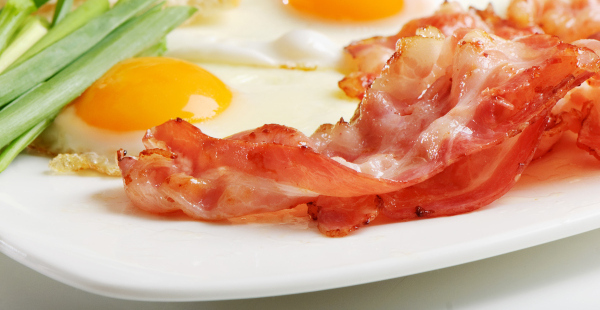
EAT TO SATISFACTION → Eat when hungry until you feel satisfied
INCREASE SALT INTAKE → A little extra salt, can help avoid possible side effects known as keto flu as your body adjusts to ketosis, including headaches, muscle cramps or weakness that occur as result of an electrolyte imbalance and since a low carb diet is naturally diuretic, you don’t have to avoid salt to minimize water retention.
Get that salt from 1 to 2 cups of broth daily or soy sauce over food.
Caution: ask your doctor about increasing salt, and if you are being treated for a condition that requires limited sodium intake, like hypertension continue with the medical advice of your doctor.
DRINK LOTS OF WATER → Water is a natural appetite suppressant and also supports the body’s ability to metabolize fat. Several studies found that reducing intake of water may cause fat deposits to increase while drinking more reduces them.
Hydration greatly promotes weight loss, so drink lots of fresh water throughout the day. The more active you are the more hydration you will need.
Evaluating Macronutrients In Ketosis
Carbohydrate, protein, and fat are all macronutrients that have differing effects on ketosis based on how they are digested and how each affects glucose levels in the blood.
- Carbohydrates are 100% anti-ketogenic due to their ability to raise both glucose and insulin levels in the blood.
- Protein is 46% ketogenic and 58% anti-ketogenic because more than 50% of all protein from food is converted to glucose that raises insulin.
- Fat is 90% ketogenic and only 10% anti-ketogenic representing the conversion of the glycerol portion of triglycerides to glucose. The eating of fats has minimal effect on ketosis in the literal sense; it is more of an effect on how much body fat versus dietary fat is burned as fuel in the body.
When in Doubt, Eat Fewer Carbs and More Fat
Choosing The Right Fats In Keto
 Contrary to all the hype about fat, replacing sugar and carbs with healthy fats actually does result in weight loss, as shown by many studies.
Contrary to all the hype about fat, replacing sugar and carbs with healthy fats actually does result in weight loss, as shown by many studies.
It is also true that low-carb diets have been shown to result in more weight loss and a larger reduction in cholesterol levels than low-fat diets.
Fat does not make you fat in it of itself, fat has more calories than carbs or protein, so a high intake of fat may result in a higher caloric intake, which can cause weight gain under normal dietary conditions.
Additionally, it is when carbs and fat are mixed that problems in weight gain arise. The only proof you really need to this fact is the insurmountable amount of carb/fat-laden junk food and processed food that we consume as a society that in great part has resulted in the epidemic levels of obesity (1/3 of all US adults) in the United States.
When you limit carb intake, the body will use dietary fats and your own fat stores for energy, literally turning your body into a fat burning machine, helping to reduce belly, thigh, and hip fat.
What Fat Does Inside The Body
While fat has more calories, 9 per gram versus the 4 per gram in both protein and carbs, it’s more important to understand what it does inside the body.
When you are young your metabolism and high activity levels may allow you to eat carbs and fats and maintain a healthy weight, but as you get older and activity levels and metabolism slow down the weight may start to creep up.
If you are already overweight and your diet is filled with carbs, it makes it very difficult for the body to use stored fat for energy because it always defaults to carbs for that purpose.
- Greatly reducing carb intake promotes the body’s ability to burn fat stores for energy resulting in healthy weight loss.
- Unlike carbs, fat also promotes satiety and fullness, helping to regulate the appetite so you actually eat less. In fact, you have to eat two times more carb calories as fat calories to reach the same level of fullness.
- Unlike carbs, fat has little impact on blood glucose, which keeps blood sugars stable, eliminating out of control cravings and hunger that comes after eating carbs.
Types Of Fats
- Monounsaturated fats are found in avocados, nuts, olive oil, and canola oil.
- Polyunsaturated fats are found in vegetable, seed and nut oils, like soybean, corn and sesame oils along with fatty fish like salmon and sardines.
- Essential fatty acids include both omega-3 and omega-6 fatty acids that the body cannot produce on its own. Shellfish is rich in omega-3s and you can get omega-6s from chicken, pork, and seeds.
- Ideally, you need to balance the intake of both omega-3s and omega 6 fatty acids with a balanced combination of shellfish, fatty fish and nuts, canola oil and flaxseed.
- Saturated fats are those that are solid at room temperature, and their best sources on a low carb diet are butter, red meat, and coconut oil. Since the target of the Ketogenic diet is to burn fat for energy consuming these types of fats is not only acceptable, but also required, and many studies confirm that this fat intake while on a low carb diet does not raise cholesterol or fat levels in the blood.
- Trans fats (also known as partially hydrogenated vegetable oil or hydrogenated vegetable oil) are bad news, increase the risk for heart disease and should always be avoided when eating a Keto diet. These are typically found in fried foods, sweets, baked goods, processed snacks, and food products, cookies, crackers, and vegetable shortenings.
Optimal Fat Intake
Remember, the goal of fat is to provide satiety, boost energy, increase metabolism and support the enjoyment of food as fats make everything taste better.
It is not advisable to eat so much fat that you send your caloric intake through the roof. The following guidelines can help you get an idea of daily fat intake; of course, body size will determine the portions, as larger men will eat more than smaller women will. You can choose fats in any combinations you see fit.
Daily Fat Intake Guidelines:
- 2 to 3 eggs
- 1 tablespoon of butter
- 2 tablespoons of heavy cream
- 2 tablespoons of olive oil when cooking or for salad dressings
- 2 ounces of cheese
- 4 to 6 ounces of meat, chicken, seafood, or fish at each meal
- ½ an avocado or 10 olives
- 1 to 2 ounces of nuts or seeds (depending on your ketotic state and as long as they do not take you out of ketosis)
- Use canola, peanut and grapeseed oils for pan cooking and stir-frys.
- Use full-fat mayonnaise, canola oil mayo is a good choice.
- Coconut oil contains ketosis-boosting MCTs (medium chain triglycerides). A tablespoon a day is fine in replacement of another fat. You can also get a purer form of MCTs in supplement oil form.
- Avoid low-fat foods, including reduced fat dairy. These foods typically contain carbohydrates and chemical compounds that have not been well studied as to risks for human health.
- Replace milk in coffee with heavy cream, which has less than 1 gram of carbs per tablespoon, while milk is very high in natural sugars.
[thrive_lead_lock id=’722′]Hidden Content[/thrive_lead_lock]
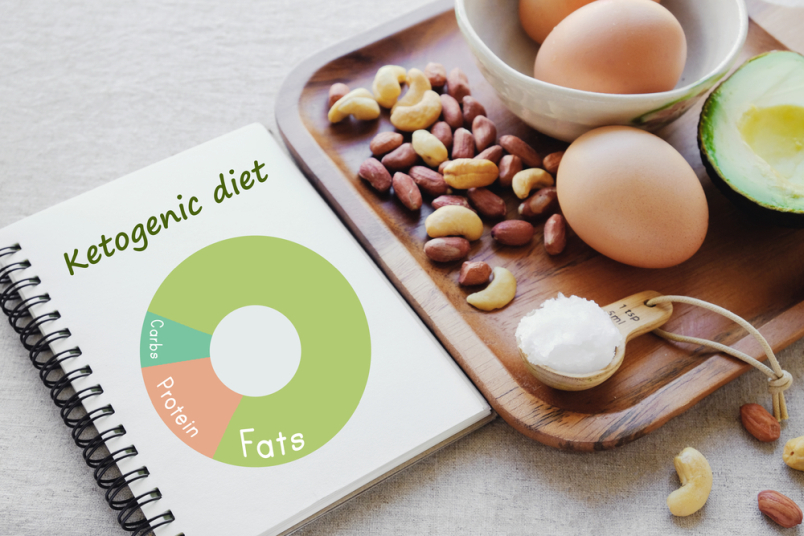
Leave a Reply